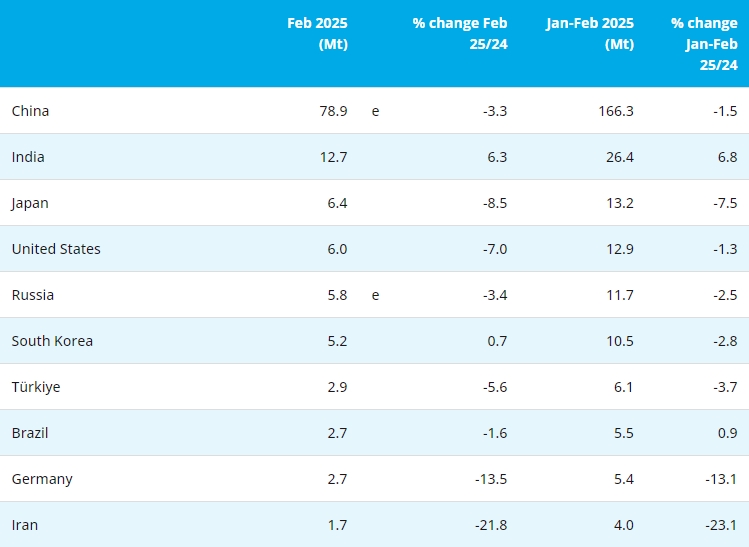It would seem to defy logic that iron ore prices have continued to rise in recent weeks even as China steps up the idling of steel production as part of efforts to limit air pollution over winter.
While there is a historic correlation between iron ore and steel prices in China, the world’s largest importer of the former and producer of the latter, it would have been reasonable to expect them to have diverged in recent weeks, and in the coming months.
Steel prices should outperform iron ore, given it’s steel output that is being restricted, leading to a tightening of the supply side of the market.
However, iron ore suffers from no such supply-side scarcity, rather just the opposite, with abundant cargoes available from major exporters Australia, Brazil and South Africa.
With China producing less steel, and signs that iron ore imports are starting to moderate, it would be logical to expect iron ore prices to slip.
However, the spot price of 62 percent iron ore at the Chinese port of Qingdao, as assessed by Metal Bulletin, has rallied 15 percent this month, to end at $67.27 a tonne on Monday.
It is also 26 percent above the low so far this year of $53.36 from June 13, although the price is still well below the peak of $94.86 on Feb. 21.
Nonetheless, it’s hard to make an argument that iron ore prices are especially weak, or even looking vulnerable.
IRON ORE GRADES
China’s imports of iron ore slumped in October, dropping 22.7 percent to 79.5 million tonnes from September’s record high of 102.8 million, according to official data.
However, the numbers should be treated with caution, given the potential distortion of both September and October figures because of a holiday week in early October.
Vessel-tracking data compiled by Thomson Reuters Supply Chain and Commodity Forecasts suggest that November will see a stabilisation of China’s iron ore imports.
A total of 78.74 million tonnes of iron ore had been discharged at Chinese ports from the start of November up to the 27th, according to the shipping data.
This suggests seaborne imports of at least 80 million tonnes for the whole month, which would be below the monthly average of 89.6 million for the first 10 months of 2017.
If customs data shows China’s imports in November in line with the vessel-tracking, it will lend support to the idea that iron ore imports are easing in line with the lower steel output.
This in turn would suggest that spot iron ore prices have room to decline in order to better reflect the supply-demand balance.
However, there is also the possibility that the market takes the view that steel production is likely to return strongly after the winter restrictions, and that buying iron ore ahead of that expected surge makes financial sense.
It’s also worth noting that the iron ore market in China increasingly appears to be a story of the difference between higher and lower grades of the steel-making ingredient.
Iron ore fines with a 66 percent iron content from Brazil’s Carajas mine were at 635 yuan ($96.21) a tonne at Qingdao on Monday, according to Custeel, an industry website.
However, iron ore with a 54 percent iron content from India was at just 205 yuan a tonne, a discount of 67 percent to the higher grade.
This discount has widened over the year, having finished 2016 at 31 percent and standing at 56 percent as at the end of June.
It’s likely that Chinese steel mills are currently endeavouring to keep output as high as possible by using higher grade iron ore.
In this way they can meet the demands by the authorities to cut back on the number of blast furnaces in use in order to lower pollution, but still extract maximum output from those furnaces still operating.
Overall, it appears iron ore prices are holding up well for the higher grades as this is the current preference of many Chinese mills.
Additionally, sentiment remains positive based on a bullish view of steel production once the northern winter ends.
It will probably take sharply lower iron ore imports in China to alter this view, and even then, it may only be temporary.
Source: Reuters (Editing by Richard Pullin; editing by Richard Pullin)
- [Editor:Wang Linyan]



 Save
Save Print
Print Daily News
Daily News Research
Research Magazine
Magazine Company Database
Company Database Customized Database
Customized Database Conferences
Conferences Advertisement
Advertisement Trade
Trade












 Online inquiry
Online inquiry Contact
Contact

Tell Us What You Think